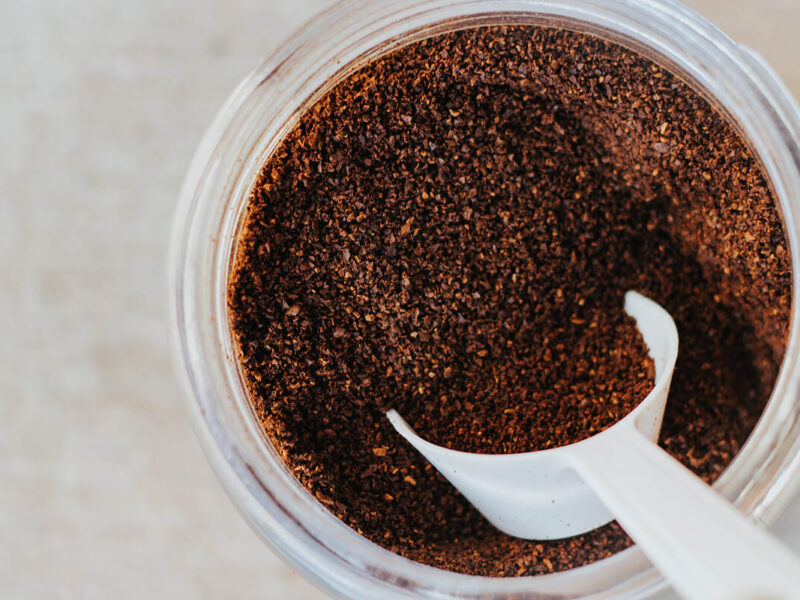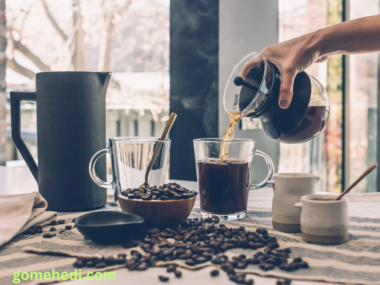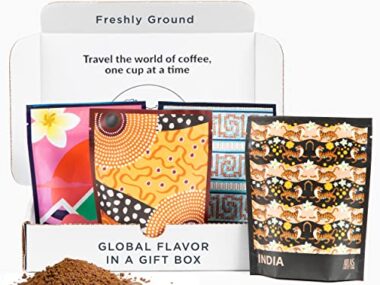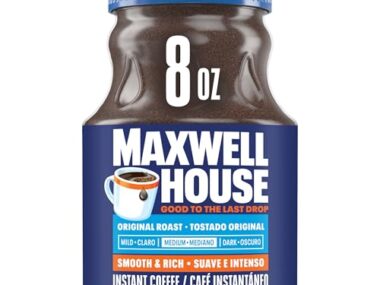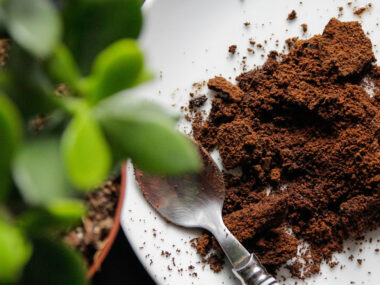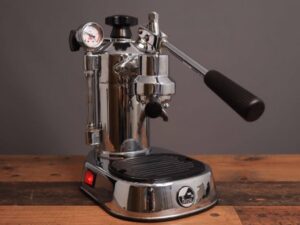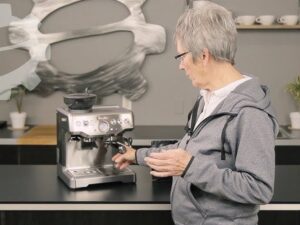The perfect cup of coffee starts with the right measurements. Learn how many tbsp of coffee per cup you need for a rich, flavorful, and balanced brew.
Brewing coffee can feel like an art. The right coffee-to-water ratio is crucial for flavor. Too much coffee, and it’s too strong; too little, and it’s weak. Finding the perfect balance can be tricky. This guide will help you understand how many tablespoons of coffee per cup you need.
Whether you like it bold or mild, the right measurement makes all the difference. Let’s dive into the details and make every cup just right.

Credit: www.coffeefriend.co.uk
Coffee Basics
Finding the perfect cup of coffee often starts with a simple question: How many tablespoons of coffee per cup? This basic step sets the foundation for a great brew. Understanding the coffee basics can help you get the right balance of flavor and strength in every cup.
Types Of Coffee Beans
Knowing the types of coffee beans is crucial. Each type has a unique flavor and strength. The most popular beans are Arabica and Robusta.
- Arabica: These beans are popular for their smooth, complex flavor. They make up about 60% of the world’s coffee. Arabica beans have less caffeine than Robusta.
- Robusta: Known for their strong, bitter taste. These beans have a higher caffeine content. They are often used in espresso blends.
- Liberica: Less common, but with a unique, fruity flavor. These beans are grown in specific regions and can be harder to find.
- Excelsa: A variety of Liberica, these beans have a tart, fruity flavor. They add complexity to coffee blends.
Choosing the right bean depends on your taste. If you like a smooth, mild coffee, go for Arabica. For a strong, bold cup, choose Robusta. Experimenting with different beans can help you find your perfect brew.
Brewing Methods
The brewing method also affects how many tablespoons of coffee you need per cup. Different methods require different amounts and grind sizes.
| Brewing Method | Grind Size | Coffee to Water Ratio |
|---|---|---|
| Drip Coffee | Medium | 1:15 |
| French Press | Coarse | 1:12 |
| Espresso | Fine | 1:2 |
| Aeropress | Medium-Fine | 1:16 |
| Pour Over | Medium | 1:17 |
For drip coffee, use a medium grind and a ratio of 1 tablespoon per 15 grams of water. French Press requires a coarse grind and a ratio of 1 tablespoon per 12 grams of water. Espresso needs a fine grind and a ratio of 1 tablespoon per 2 grams of water.
Each method has its own charm. Drip coffee is convenient for everyday use. French Press gives a richer, full-bodied flavor. Espresso is strong and concentrated. Aeropress is versatile and easy to clean. Pour over offers control and precision.
Finding your favorite brewing method can take time. Try different methods and see which one suits your taste. This can help you enjoy the perfect cup of coffee every time.
Measuring Coffee
Making the perfect cup of coffee requires precision. Measuring coffee correctly ensures a balanced and flavorful brew. Many wonder how many tablespoons of coffee per cup they should use. Understanding the right measurements can help you achieve that ideal cup every time.
Tablespoon Vs. Grams
When measuring coffee, you can use either tablespoons or grams. Each method has its benefits. Tablespoons are common in most kitchens. They are easy to use and don’t require a scale. Grams, on the other hand, offer more precision. Many coffee enthusiasts prefer using grams for a consistent brew every time.
Here’s a quick comparison between tablespoons and grams:
| Measurement | Equivalent Coffee Amount |
|---|---|
| 1 Tablespoon | 5-7 grams |
| 2 Tablespoons | 10-14 grams |
Using grams ensures you have the exact amount of coffee needed. A kitchen scale can help with this. For those without a scale, tablespoons work well. Remember, the size of coffee grounds can affect the weight. Finer grounds weigh more per tablespoon than coarser ones.
In summary, use tablespoons for convenience. Opt for grams if you want precision. Both methods can help you achieve a great cup of coffee.
Common Ratios
Finding the right coffee-to-water ratio is key. The most common ratio is 1:15. This means 1 part coffee to 15 parts water. This ratio works well for most brewing methods.
Here are some common coffee-to-water ratios:
- Mild Brew: 1 tablespoon of coffee per 8 ounces of water
- Medium Brew: 1.5 tablespoons of coffee per 8 ounces of water
- Strong Brew: 2 tablespoons of coffee per 8 ounces of water
For those using grams, here are the ratios:
| Coffee Amount | Water Amount |
|---|---|
| 10 grams | 150 grams (150ml) |
| 15 grams | 225 grams (225ml) |
| 20 grams | 300 grams (300ml) |
Adjust the ratios based on personal preference. Some like their coffee stronger. Others prefer a milder taste. Start with the common ratios and tweak as needed. This ensures you get the perfect cup of coffee suited to your taste.
Recommended Amounts
Brewing the perfect cup of coffee involves getting the right balance of coffee grounds to water. The amount of coffee you use can greatly affect the taste and strength of your brew. Understanding the recommended amounts can help you achieve a delicious cup every time.
Standard Ratios
The standard ratio for brewing coffee is crucial. It ensures consistency and a balanced flavor. Generally, the Golden Ratio is often used. This ratio is about 1 to 2 tablespoons of coffee per 6 ounces of water. Here’s a simple table to illustrate:
| Number of Cups | Tablespoons of Coffee | Ounces of Water |
|---|---|---|
| 1 | 1 to 2 | 6 |
| 2 | 2 to 4 | 12 |
| 4 | 4 to 8 | 24 |
Using this ratio, you can adjust the amount of coffee based on how many cups you are making. For a stronger brew, use closer to 2 tablespoons per cup. For a milder brew, use closer to 1 tablespoon per cup. This method ensures you have control over the strength and flavor of your coffee.
Consistency is key. Using the same ratio each time helps you achieve a reliable taste and strength. This is especially helpful when trying new coffee beans or brewing methods. Stick to the standard ratios for a dependable cup of coffee every time.
Personal Preferences
While standard ratios provide a good starting point, personal preferences play a significant role in coffee brewing. Everyone’s taste is different, and what works for one person might not work for another. Here are some factors to consider:
- Taste Preference: Some prefer a stronger, bolder coffee, while others enjoy a lighter, milder brew.
- Brewing Method: Methods like French press, drip, and espresso require different amounts of coffee.
- Type of Coffee Beans: Different beans and roasts can affect the taste, so you might need to adjust the amount used.
For those who enjoy experimenting, start with the standard ratio and make small adjustments. Add a bit more coffee if you like it stronger. Use a bit less if you prefer it milder. Keeping track of these adjustments can help you find your perfect balance.
Here’s a handy tip: If you’re unsure, start with 1.5 tablespoons of coffee per 6 ounces of water. From there, tweak the amount based on your taste. This middle ground offers a good balance and can be adjusted easily.
Remember, brewing coffee is both an art and a science. The goal is to make a cup that you enjoy. Don’t be afraid to experiment with different amounts until you find the perfect cup for your taste.

Credit: www.pinterest.com
Factors Influencing Amounts
Determining the right amount of coffee per cup can be tricky. Several factors influence how many tablespoons of coffee you should use. These factors include coffee strength and brew time. Understanding these elements will help you brew the perfect cup each time.
Coffee Strength
The strength of your coffee largely depends on your personal preference. Some people enjoy a strong, bold flavor, while others prefer a lighter taste. Typically, the standard ratio is 1 to 2 tablespoons of coffee per 6 ounces of water. Here are some guidelines to help you adjust the coffee strength to your liking:
- Mild Coffee: Use 1 tablespoon of coffee per 6 ounces of water.
- Medium Coffee: Use 1.5 tablespoons of coffee per 6 ounces of water.
- Strong Coffee: Use 2 tablespoons of coffee per 6 ounces of water.
It’s important to note that the type of coffee beans can also influence the strength. Robusta beans tend to produce a stronger, more bitter coffee compared to Arabica beans, which are generally smoother and milder. Experimenting with different beans and grind sizes can help you find the perfect balance.
A simple table can also help guide you:
| Strength | Tablespoons of Coffee | Water (oz) |
|---|---|---|
| Mild | 1 | 6 |
| Medium | 1.5 | 6 |
| Strong | 2 | 6 |
Adjusting the ratio based on your taste can make a significant difference in your coffee experience. Remember, there’s no right or wrong amount, just what tastes best to you.
Brew Time
Brew time is another crucial factor that impacts how many tablespoons of coffee you should use per cup. The length of time the coffee grounds are in contact with water affects the extraction process. This, in turn, influences the flavor and strength of your coffee.
Here are some general guidelines for different brewing methods:
- Drip Coffee Maker: Brew time is usually between 4 to 5 minutes. Use 1 to 2 tablespoons of coffee per 6 ounces of water.
- French Press: Brew time ranges from 4 to 5 minutes. Use a coarser grind and 2 tablespoons of coffee per 6 ounces of water.
- Espresso: Brew time is about 25 to 30 seconds. Use a fine grind and 1 to 1.5 tablespoons of coffee per 1 ounce of water.
- Cold Brew: Brew time is between 12 to 24 hours. Use a coarse grind and 1 cup of coffee per 4 cups of water.
Here is a table summarizing these methods:
| Brewing Method | Brew Time | Tablespoons of Coffee | Water (oz) |
|---|---|---|---|
| Drip Coffee Maker | 4-5 minutes | 1-2 | 6 |
| French Press | 4-5 minutes | 2 | 6 |
| Espresso | 25-30 seconds | 1-1.5 | 1 |
| Cold Brew | 12-24 hours | 16 (1 cup) | 32 (4 cups) |
Adjusting brew time can help you tailor the flavor and strength of your coffee. Shorter brew times usually result in weaker coffee, while longer times extract more flavors and strength. Finding the right balance can enhance your coffee experience.
Taste Testing
Brewing the perfect cup of coffee involves a bit of science and a lot of personal preference. Understanding how many tablespoons of coffee per cup is ideal can be a game-changer for your morning routine. Taste testing is the key to finding that perfect balance. By experimenting with different ratios, you can discover the flavor profile that suits you best.
Finding Your Flavor
Everyone’s taste buds are different, so the ideal coffee-to-water ratio varies from person to person. Finding your flavor involves a bit of trial and error, but it is worth the effort. Here are some steps to guide you:
- Start with the standard ratio: The general rule of thumb is 1 to 2 tablespoons of coffee per 6 ounces of water. This is a good starting point.
- Note your preferences: Do you like your coffee strong or mild? Adjust your measurements accordingly.
- Experiment with different beans: Different coffee beans have distinct flavors. Trying various types can help you find what you like best.
Consider making a small table to keep track of your experiments:
| Trial | Coffee (Tbsp) | Water (oz) | Notes |
|---|---|---|---|
| 1 | 1 | 6 | Too weak |
| 2 | 2 | 6 | Just right |
| 3 | 3 | 6 | Too strong |
By keeping track of your findings, you can easily identify what works best for you. Taste testing is not just about the quantity of coffee. It also includes the grind size, the type of water, and the brewing method. All these factors contribute to the final taste of your coffee.
Adjusting Ratios
Once you have a general idea of your preferred flavor, adjusting ratios can help you fine-tune your coffee experience. Here are some tips:
- Small Adjustments: Make small changes to the amount of coffee or water. For example, if 2 tablespoons of coffee per 6 ounces of water is too strong, try 1.5 tablespoons.
- Consistency: Use the same type of coffee beans and water to keep your tests consistent. This helps in accurately adjusting the ratios.
- Brewing Time: The time you let your coffee brew also affects the taste. A longer brew time can make the coffee stronger.
Adjusting ratios can be a fun and rewarding process. Here is a simple table to help you keep track of your adjustments:
| Adjustment | Coffee (Tbsp) | Water (oz) | Brewing Time (min) | Notes |
|---|---|---|---|---|
| 1 | 1.5 | 6 | 4 | Mild, balanced |
| 2 | 2 | 8 | 5 | Strong, flavorful |
| 3 | 2.5 | 10 | 6 | Very strong |
By making these adjustments, you can create a cup of coffee that is perfect for you. Remember, there is no right or wrong way to enjoy coffee. It is all about what tastes best to you. Happy brewing!
Tools For Measurement
Making the perfect cup of coffee often starts with the right measurements. Knowing how many tablespoons of coffee per cup is essential. Using the right tools for measurement can make a big difference in flavor and strength. Let’s explore two popular methods: coffee scoops and digital scales.
Coffee Scoops
Using a coffee scoop is one of the easiest ways to measure coffee. A standard coffee scoop equals about two tablespoons. This method is quick and simple, ideal for those in a hurry. Here are some key points about coffee scoops:
- Consistency: Coffee scoops provide a consistent measurement. This helps achieve a similar taste every time.
- Convenience: They are easy to use and clean. No special skills are required.
- Availability: Coffee scoops can be found in many kitchen stores. They are often included with coffee makers.
Here’s a simple table to understand the coffee-to-water ratio using scoops:
| Cups of Coffee | Water (oz) | Tablespoons of Coffee | Number of Scoops |
|---|---|---|---|
| 1 | 8 | 2 | 1 |
| 2 | 16 | 4 | 2 |
| 4 | 32 | 8 | 4 |
While coffee scoops are convenient, they may not be as precise as digital scales. This can lead to slight variations in taste. If you prefer an exact measurement, consider using a digital scale.
Digital Scales
Digital scales offer a precise way to measure coffee. They are favored by coffee enthusiasts who seek perfection. Here are some advantages of using digital scales:
- Accuracy: Digital scales provide exact measurements. This ensures a consistent flavor every time.
- Flexibility: You can measure both coffee and water. This helps in adjusting the ratio to your liking.
- Control: Digital scales allow for fine adjustments. This is useful for experimenting with different brews.
Let’s look at a basic guide on how to use a digital scale:
- Turn on the scale and place your coffee container on it.
- Press the tare button to reset the scale to zero.
- Add coffee beans until you reach the desired weight. A standard ratio is 1 gram of coffee per 15 grams of water.
- Grind the coffee and brew as usual.
Using a digital scale might seem more complex, but it offers precision. Here is a comparison of the coffee-to-water ratio:
| Cups of Coffee | Water (grams) | Coffee (grams) |
|---|---|---|
| 1 | 240 | 16 |
| 2 | 480 | 32 |
| 4 | 960 | 64 |
Digital scales are perfect for those who want exactness in their coffee brewing. This method ensures that you get the best flavor possible.
Common Mistakes
Making the perfect cup of coffee involves more than just adding a few tablespoons of coffee per cup. There are common mistakes that can ruin the taste, aroma, and overall coffee experience. Understanding these mistakes can help you make a better cup of coffee every time.
Too Much Or Too Little
One of the most frequent mistakes is using the wrong amount of coffee. The ideal ratio is crucial. If you use too much coffee, your drink may be too strong and bitter. On the other hand, too little coffee can result in a weak, watery brew.
Here are some guidelines to avoid this mistake:
- Standard Ratio: A common rule is to use 1 to 2 tablespoons of coffee for every 6 ounces of water.
- Consistency: Always use the same spoon to measure your coffee to maintain consistency.
- Adjustments: If you find the coffee too strong or too weak, adjust the amount slightly until you find your perfect balance.
Using a consistent ratio ensures that you get a reliable flavor every time. Below is a table to help you remember the correct coffee-to-water ratio:
| Cups of Water | Tablespoons of Coffee |
|---|---|
| 6 oz (1 cup) | 1-2 tbsp |
| 12 oz (2 cups) | 2-4 tbsp |
| 18 oz (3 cups) | 3-6 tbsp |
Remember, the right amount of coffee can make or break your brew. Always measure accurately and adjust to your taste.
Ignoring Grind Size
Another common mistake is ignoring the grind size. The grind size of your coffee beans significantly affects the flavor and strength of your brew. Different brewing methods require different grind sizes.
Here are some important points to consider:
- Coarse Grind: Best for French press and cold brew. It allows water to pass through slowly, extracting flavors evenly.
- Medium Grind: Ideal for drip coffee makers and pour-over methods. It provides a balanced extraction.
- Fine Grind: Perfect for espresso and Aeropress. It ensures a quick extraction, offering a strong and rich flavor.
Using the wrong grind size can result in over-extraction or under-extraction. Over-extraction makes coffee taste bitter, while under-extraction gives a sour flavor. Below is a table to help you choose the correct grind size:
| Brewing Method | Grind Size |
|---|---|
| French Press | Coarse |
| Drip Coffee | Medium |
| Espresso | Fine |
By paying attention to grind size, you can enhance the flavors and enjoy a better cup of coffee. Always match the grind size with your brewing method for the best results.
Brewing Tips
Making the perfect cup of coffee involves more than just knowing how many tablespoons of coffee per cup. Brewing tips are essential to enhance the flavor and aroma of your brew. Here, we will discuss the significance of water temperature and the best ways to store your coffee.
Water Temperature
Water temperature plays a crucial role in brewing coffee. The ideal temperature for brewing coffee is between 195°F and 205°F (90°C to 96°C). Using water that is too hot or too cold can affect the taste of your coffee. Here are some important points to consider:
- If the water is too hot, it can over-extract the coffee grounds, resulting in a bitter taste.
- If the water is too cold, it can under-extract the coffee grounds, leading to a weak and sour flavor.
Using a thermometer can help you achieve the perfect brewing temperature. If you don’t have a thermometer, you can bring water to a boil and then let it sit for 30 seconds to reach the desired temperature.
Here is a simple table to help you understand the impact of water temperature:
| Water Temperature | Result |
|---|---|
| Below 195°F (90°C) | Under-extracted, weak, sour |
| 195°F – 205°F (90°C – 96°C) | Perfect extraction, balanced flavor |
| Above 205°F (96°C) | Over-extracted, bitter |
Storage Of Coffee
Proper storage of coffee is essential to maintain its freshness and flavor. Here are some tips on how to store your coffee:
- Airtight containers: Store coffee in airtight containers to keep out air, moisture, and light. This helps preserve the coffee’s freshness.
- Cool and dark places: Keep the coffee in a cool, dark place. Avoid storing coffee near heat sources, such as ovens or stoves.
- Avoid the refrigerator: The fridge can cause condensation, which can lead to moisture getting into the coffee. This can affect the flavor.
Here is a quick reference table for coffee storage:
| Storage Method | Result |
|---|---|
| Airtight container in a cool, dark place | Best preservation of flavor |
| Refrigerator | Moisture can affect flavor |
| Freezer | Can be used for long-term storage but may affect flavor |
By following these storage tips, you can ensure your coffee stays fresh and delicious for as long as possible.

Credit: coffeechronicler.com
Frequently Asked Questions
How Many Tablespoons Of Coffee Per Cup?
Generally, use 1 to 2 tablespoons of coffee per 6-ounce cup. Adjust based on your taste preference.
What’s The Ideal Coffee To Water Ratio?
The ideal ratio is 1 to 2 tablespoons of coffee per 6 ounces of water. This ensures a balanced flavor.
Can I Use More Coffee For A Stronger Brew?
Yes, you can use more coffee. Increase to 2 tablespoons per cup for a stronger brew.
Does Coffee Grind Size Affect Tablespoon Measurement?
Yes, finer grinds pack more coffee into a tablespoon. Coarser grinds fill the tablespoon less densely.
Conclusion
Finding the right amount of coffee takes practice. Remember, two tablespoons per cup is ideal. Adjust to your taste preferences. Enjoy experimenting with different amounts. A perfect cup of coffee awaits. Savor every sip. Happy brewing!
